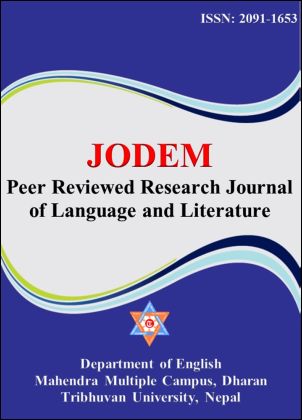Emotion of Love in Fitzgerald’s The Great Gatsby: A Rasaesthetic Perspective
DOI:
https://doi.org/10.3126/jodem.v13i1.47460Keywords:
Dominant emotion, rasa, rasaesthetics, romantic relationship, transitory emotionsAbstract
This research article attempts to explore the emotion of love in Fitzgerald’s The Great Gatsby. The paper aims at finding how the love emotions are evoked in characters and how the spectators or actors experience these emotions while reading the novel. Fitzgerald’s novel is a depiction of the Americans living in the material world where they hanker after material bliss, forgetting human sensitivity. The text unfurls some issues like dream, hope, and desire to win love, which ultimately results in frustration and spiritual sterility in the Western country. Basically, the novel is about a man’s quest for wealth and dream. However, he utterly fails to realize these in the text. To analyze the text, I embark upon Indian Rasa Theory. As such, the Indian Aesthetics has categorized nine emotions. Thus, I use the critical perspective of Indian Aesthetics as a theoretical framework to advance the arguments. Particularly, the perspectives from Seldon Pallock and Peter Marchand are used in the textual analysis. Seldon Pallock marks that Rasa emancipates from the combination of factors, reactions, and temporary emotions. Findings drawn from the discussion are that love emotion out of nine emotions is available in some characters, events and description of scenes in the text. Furthermore, these emotions help appreciate the literary text through the notion of rasa theory.
Downloads
Downloads
Published
How to Cite
Issue
Section
License
© Department of English, Mahendra Multiple Campus, Dharan, Nepal

